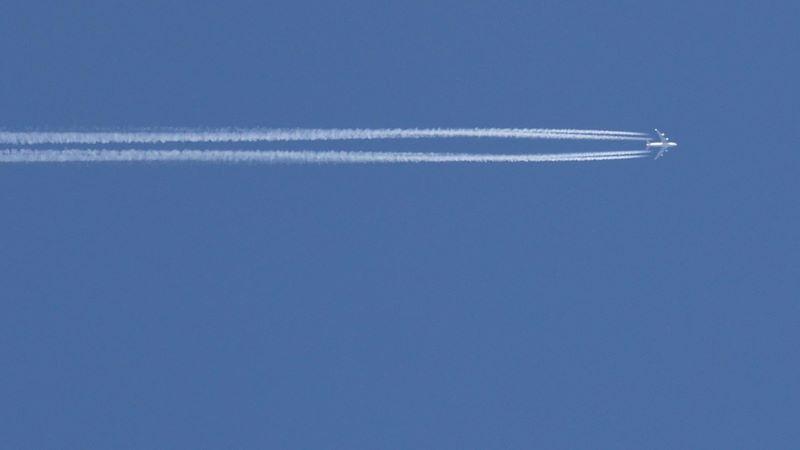
As the aviation industry rises to the challenge of reducing CO2 emissions from aircraft, debate continues over whether condensation trails caused by water vapor in engine exhausts are at least as great a contributor to the climate effect of aviation.
Recognizing the potential impact from contrails, the U.S. Energy Department’s Advanced Research Projects Agency–Energy (ARPA-E) has announced up to $10 million in funding to develop an Aviation Contrail Predictive System capable of informing pilots and ground controllers in real time whether an aircraft is likely to produce persistent contrails.
Most contrails dissipate in under 10 min. and are not a concern, but in certain atmospheric conditions they can persist and produce clouds, known as aircraft-induced cirrus, that can last for hours and spread over a wide area. Persistent cirrus can have a cooling or a warming effect, respectively reflecting sunlight back into space or trapping heat radiating from the Earth’s surface that would otherwise escape to space.
The dominant effect is considered to be warming, and contrail cirrus is thought to contribute more than half of aviation’s warming effect on climate. But for contrails to form, suitable atmospheric conditions must exist immediately behind the engine in the expanding exhaust plume. A contrail will form if, as exhaust gases cool and mix with surrounding air, humidity is high enough or temperature low enough for water vapor to condense and form liquid droplets that freeze to produce ice particles. But atmospheric conditions vary daily, seasonally and globally.
Estimates of the effective radiative forcing from contrail cirrus vary widely. “Contrails can lead to a global warming effect, however the error bar is pretty large,” said Peter de Bock, ARPA-E program director. “But contrails can generate clouds as wide as 50 mi. that act as a blanket preventing heat leaving the Earth, and at the bottom level of that error bar the effect is about half that of CO2 emissions.”
The funding opportunity announced by ARPA-E is called Pre-Trails, for Predictive Real-Time Emissions Reducing Aircraft-Induced Lines in the Sky. The project will explore three technology areas needed to develop the predictive system: aircraft and environmental data and sensors; predictive modeling methods; and observer data to validate and train the predictive model.
The concept behind Pre-Trails is to use the aircraft as a sensor that can sense when it is producing persistent contrails that could contribute to radiative forcing. “We want an on-plane observer, a rear-view mirror for the aircraft,” de Bock told the American Institute of Aeronautics and Astronautics SciTech forum in Washington in January, posing the question, “Can we detect and mitigate contrails in real time?”
Any predictive system has to answer a series of questions, de Bock said, including: “Are we producing a contrail? Will it persist? Is it forming a cirrus cloud? Are there other clouds above or below it? Is a cirrus cloud at this time and place a concern?” The problem is complex because aircraft-induced cirrus is formed up to 5 hr. after persistent contrails are generated.
The first step is to develop trustworthy artificial-intelligence (AI)-controlled real-time prediction tools, the objective of ARPA-E’s Pre-Trails project. The second step is to develop contrail mitigation technology, “which has yet to be invented,” he said.
Pre-Trails is expected to develop new sensors or environmental data sources needed to train and validate the predictive tools. This could include ground observer stations near relevant flight corridors, aircraft-mounted observing stations or space-based data. Machine-learning methods will need to be developed to explore larger data sets and more complex correlations to produce reasonably accurate results, the agency said.
Development of the Aircraft Contrail Predictive System is expected to require teams to collect available data and conduct dedicated flight observations to validate the predictive tools. ARPA-E also envisions creation of a contrail reporting and observation data aggregation mechanism that mimics current tools for turbulence reporting, to continuously refine the predictive models over time.
